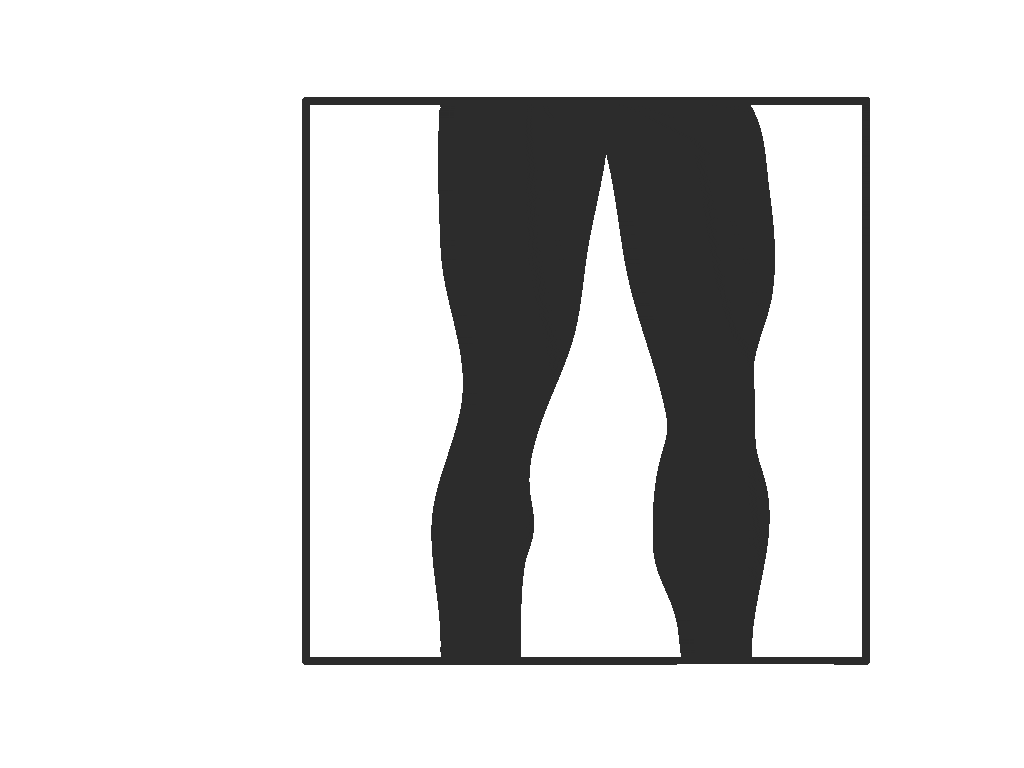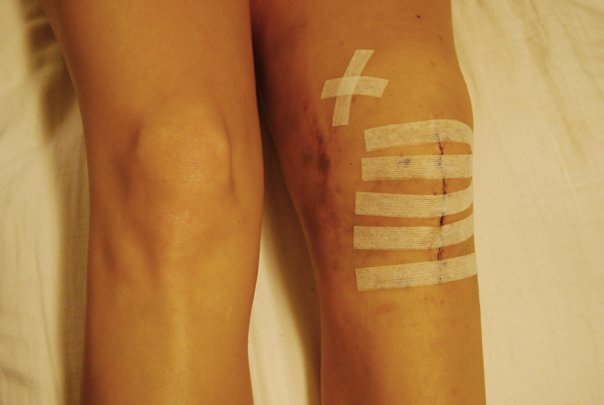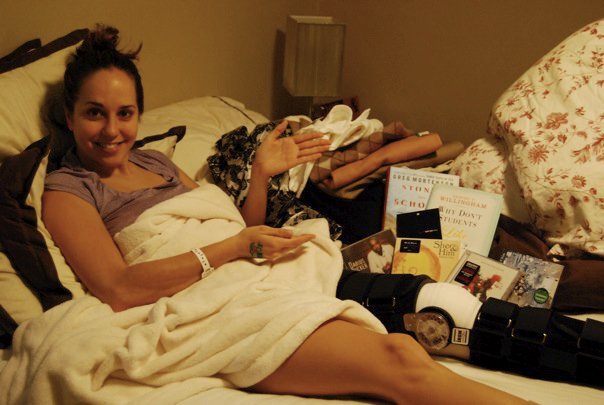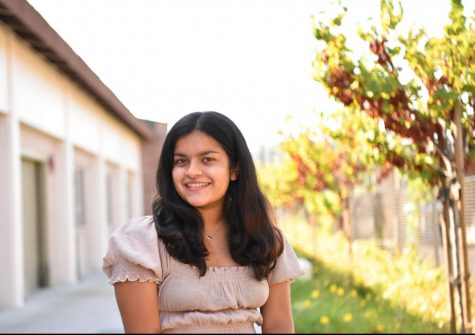ACL injuries
Athletes share how one of sports’ most difficult injuries changed their lives
May 15, 2021
Whether an athlete’s entire life revolves around their sport, or they recently picked up a new one, being an athlete often becomes one of their defining characteristics. Journalism teacher Julia Satterthwaite was always active during her childhood, specifically through playing team sports such as soccer, volleyball, softball and basketball. But when she tore her ACL in an eighth grade softball game, Satterthwaite found herself questioning her athletic future.
“I think it was disappointing to me, because I felt like [being] an athlete was my identity,” Satterthwaite said. “And [the injury] took away that part of my identity in some ways and made me go, in my mind, from ‘I’m going to play sports in college’ to ‘I don’t have a chance to play sports in college, because I have this injury that’s holding me down.’ And so I think that was really disappointing for me to lose such a big part of who I was.”
An ACL tear is “a tear or sprain of the anterior cruciate ligament (ACL),” one of the major knee ligaments. While Satterthwaite’s ACL tear transformed her athletic abilities, she says she “didn’t understand the severity of it” when she initially injured herself. In fact, the adrenaline from the play prior masked the brunt of the injury, resulting in her only realizing the true extent of her injury when her knee swelled to the size of a bowling ball.

“I was running the bases, and I was rounding third base, and it still looked like I would be able to make it, and so I [rounded] third base and I was really gunning for this home run,” Satterthwaite said. “I was super excited, running, and then I [went] to slide because it [was] getting close. When my cleat caught the lip of this hole in the dirt from people digging in to bat, I was still going really fast, I was sliding, and then basically, my leg below my knees stayed on the ground and the rest of my body popped up. And so what resulted is my leg going backwards, essentially.”
Similarly, senior and soccer player Shriya Kaushik also did not initially realize the seriousness of her ACL injury. While playing her first club game of the fall soccer season in September of 2019, Kaushik was defending the ball when a forward from the opposing team fell on her knee, causing it to go inward. She recalls being in pain and having to be carried off the field, but she was still able to walk normally a few minutes later.

However, after constant subsequent knee pain and the same knee popping out again during practice, Kaushik requested an MRI, which revealed she had torn her ACL — partially during her first injury from the game and completely during her second from practice. Kaushik wanted to return to soccer as soon as possible, especially since the next season, during junior year, was crucial to the recruitment process. She had her surgery on Oct. 22, 2019 and recovered by June, just over seven months later. However, this period of time was not easy for Kaushik.
“It was actually really tough, because I’ve been playing soccer for a long time, since I was five, and in club for 10 years now, almost 11 years,” Kaushik said. “And I think I [was] always on the track of getting committed, [and] this whole injury messed it up. It was definitely very demotivating, because I was in love with soccer — not being able to play for almost a year, it was really hard. [Especially] seeing all my teammates and everyone else that I know still playing [and] talking to coaches.”

However, Kaushik was motivated by the progress in her physical therapy, as she went from not being able to bend her leg at all to returning to soccer in eight months by attending physical therapy a few times a week.
“It’s really important that you also do the exercises at home,” Kaushik said. “They’ll give you home exercises to do and if you don’t do [them], then your recovery can be stunted. It was really cool to see the progress of my knee, because I went from being completely swollen, to walking, bending, running, cutting, doing everything that I was doing before. [The exercises had] a lot of squats, lunges [and overall] just a lot of pressure on the knee to strengthen it again.”
Physical therapist assistant and athletic trainer at BEST Physical Therapy Adan Ramirez suggests similar exercises for his patients with ACL tears, while noting that no two recovery plans are exactly the same.
“Often [ACL injuries] occur with jumping or landing,” Ramirez said. “If I get an athlete, we’re definitely working on these mechanics as well. It’s similar to the squat and the lunge position, feet hip-width apart, knees over that second and third toe, making sure that we’re not caving in. When we train the landing mechanics, what I’m really looking for is a soft landing.”
Ramirez also emphasizes both strength and flexibility in surrounding leg muscles, such as quads, hamstrings and glutes. This combination makes ACL tears especially common in teenage girls — there are often muscle strength imbalances, hormones creating looseness in ligaments and insufficient leg strength from rapid changes in body mass index due to puberty and lack of core strength. Ramirez adds that women are three times more likely to have ACL injuries also due to their larger Q angle, a measurement of the angle from the hip to the knee, which “puts the knee at a really poor position of alignment.”
“If you do a lot of leg work, building up your quad and your calf, that’s the best way to protect yourself from an ACL injury,” Satterthwaite said. “So I know that a lot of guys will [say], ‘Never skip leg days,’ like the joke, but girls really should never skip leg day, because building up their muscles around your knee protects it and while some people can have an ACL surgery and recover and come back just fine, others aren’t as lucky.”
Satterthwaite says she was “not as lucky” in terms of her ACL tear recovery. Her recovery process began not with her receiving knee surgery – her mom predicted that Satterthwaite’s athletic abilities and endurance would allow her to recover on her own more easily than the long and strenuous recovery process of a surgery after seeing Satterthwaite’s brother experience a difficult recovery from his own knee surgery. Instead, Satterthwaite occasionally had the liquid in her knee drained and then went to physical therapy, which, over time, allowed her to walk again.

Despite this taxing recovery process, once she was up and walking again, Satterthwaite continued to play sports every season of her high school athletic career. She combatted her pain by taping up her knee in a way to “serve as the ACL,” later wearing a brace and icing her knee after sports; Kaushik found both of these ways to be effective for knee support as well.
As an adult, Satterthwaite still faces issues with her knees, noting a specific trip when she went to Japan to visit her parents with her husband in the summer of 2009. While hiking, one of her favorite activities, she found her knee buckling and collapsing as she walked. Because of this, she finally decided to get surgery for the tears in her ACL as well as her meniscus in December.

However, Sattherthwaite’s recovery process from the surgery was not smooth. Her surgeon took a graft from the patellar tendon in the front part of her knee to repair the ACL rather than a hamstring graft or cadaver graft, which is a donor graft, the route Kaushik took. Sattherthwaite’s recovery was elongated by a nerve being damaged during the seven hour surgery.
“If you damage a nerve, it takes forever to try to get everything to start working again,” Satterthwaite said. “[Since] I was getting married actually in June, my goal was to walk by my wedding day. And I made it and I was able to walk. It was still kind of painful, like I couldn’t dance the night away or anything. But I definitely did walk on my wedding day, which was good.”

Over time, the patellar tendon graft in the front of her knee built up scar tissue, which resulted in her getting another knee surgery in the summer of 2013 to remove the tissue that was restricting her kneecap from moving freely. However, because she lived in Michigan at the time, there was a lack of activity during the cold, winter months; as a result, Satterthwaite continued developing scar tissue throughout winter. She expects to have to need a knee replacement surgery in the near future but is currently postponing it due to the severity of the surgery.
“The hardest part for me is the fact that I took for granted my body working normally,” Satterthwaite said. “And I’m really devastated by the fact that I don’t get to be the athlete that I once was. And I feel sad when I play football with my kids in the street, like I’m almost always the quarterback because I can’t run because my knee hurts or after I go on a hike with my friends, I have to lay on the couch in a relatively great deal of pain with an ice pack wrapped around my knee. Nothing is easy anymore. And while I am happy that I’m able to walk and maintain at least somewhat of an active lifestyle, I just missed being able to jump and being able to run fast and being able to feel like the athlete that I once was.”

















